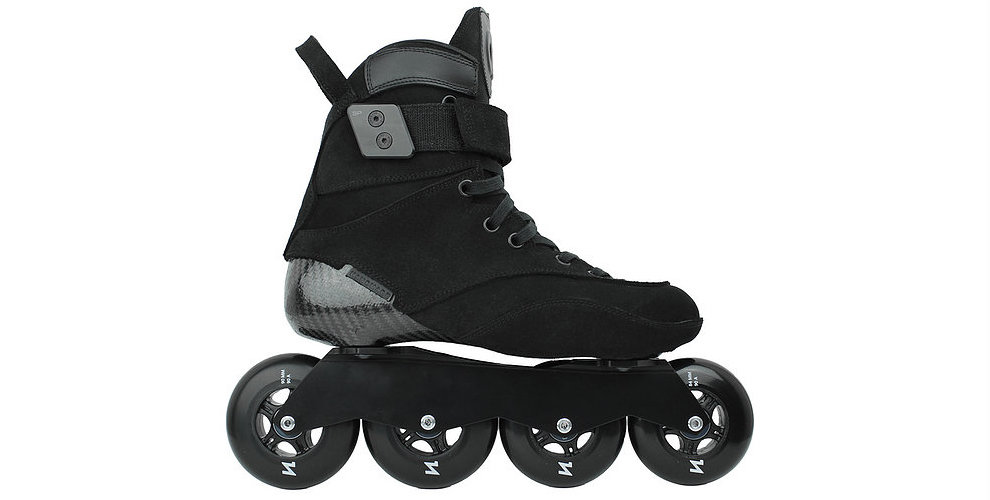Interview by Daniel Nodzak
Photos and videos provided by Bill Stoppard
Bill Stoppard is an inline skater and videographer from London, England who lives in Toronto, Ontario, Canada. Boasting an impressive 56k+ subscribers he stands as one of the most popular inline skating content creators on YouTube.
When I first discovered Bill’s channel a few years ago I was struck by the popularity of his flowcasts and city skating tutorials. While aggressive skating edits still struggle to find a few thousand views per upload Bill’s videos would often enjoy an audience ranging from tens to hundreds of thousands. It only takes a few videos to understand why. Bill is a very skilled inline skater but his content is approachable to the average person outside of the aggressive inline bubble who may be interested in skating or looking for inspiration to guide their own recreational and freeskating passions.
There’s something to be said for the simplicity of videos that focus on the technical proficiency of a skater like Bill, cruising through the streets of his city, and demonstrating what’s possible with enough practice and effort accented by his characteristically humble and witty voiceovers. So I was very excited to get the chance to pick Bill’s brain a bit and learn more about his history with skating and how he’s spent the better part of the last decade sharing his love for skating with a worldwide audience.
Before we dive in let’s start with some background. How did you get involved with inline skating?
I had inline skates in the early nineties but I only used them around twice a month for a long time. I was living in Windsor ON at the time, a city that was skate crazy from about 1994-1998. For a few summers, the people I only ever saw in the clubs or bars were outside skating with each other. I was one of hundreds of unskilled skaters who were all working out the tactics of a sport that never existed previously.
At this time I had a friend named Clay Reid, a very good hockey player. We trail skated with our friends a bunch of times, but this one time we left the trail to cross a rough parking lot, then we rolled down an alley and into our first full on street skating session. We were shocked that we could just fly through the city, we felt like super heroes when it was over. For years after this first city session I skated as often as possible, to the point of obsession for sure.
As the preeminent inline skater on YouTube you’ve carved out a unique niche for yourself in the inline skating world. Your first upload was in 2009 but it looks like your channel didn’t begin taking the shape we recognize today until 2012. What inspired you to start sharing your skating online?
Pre 2012 I wanted to build a YouTube channel about the things I thought were interesting or unique; events, protests and even neighbourhoods. I had some very successful videos early on and even sold a bunch of footage to networks around the world.
The only flaw in my YouTube plan was that I did not like my viewers. The hate filled dialogue in the comments sections of most of my successful videos repulsed and depressed me. Only the videos I made of my handsome little dog gave me satisfaction. JRT (Jack Russell Terrier) owners are like skaters, involved with something so intense that nobody else could possibly understand.
In 2012 I was over my own YouTube channel. I wanted to try something that could be more fun, more fulfilling. I’d been haunted for years by a desire to make City Skating videos, but did not know if the audience would be there. I had this huge internal resistance to broadcasting my skating for years, because I wondered if my skating was not 'special enough’. I also expected the various disciplines to shit all over me online, for half-assing techniques from their sports. I’m glad I got over those insecurities. The inline community was very encouraging right from my first inline video. My Youtube experience is so much more valuable to me now, and my sense of purpose is much clearer.
Bill Stoppard’s first inline skating video upload. August 29, 2012.
Your channel covers everything from flowcasts, product reviews, tutorials, fitness routines for skaters, and you’ve even experimented with podcasting. But nobody reaches 55k subscribers without tripping over a few cracks in the road. Can you think of any examples of ideas you’ve tried out that just fell flat?
Usually when sound concepts don’t translate to success as a video, I can see where I went wrong. My weaker videos almost always coincide with a weaker effort. But my biggest flop, that truly surprised me; RED July. (July 2018)
The Roll Every Day series was 32 skate videos in 32 days. Viewer and subscriber wise it turned out to be negative for my channel. By day 15 I was physically exhausted and realizing that every time I uploaded I actually lost subscribers. I remember feeling physically ill pushing the upload button for the last 16 RED Julys.
I lost more subscribers that month than in any other month in my channels' history. What was designed to boost my channel by tens of thousands of subs, took over a year to recover from. The shock was so complete because I loved the work I was producing in Red July. I’m not capable of much better.
The fantastic people I met and the super encouraging feedback from those who watched or even joined RED July was so contradictory to the quantifiable failure it proved to be. A very confusing experience for me.
Bill Stoppard’s RED July 2018. Full playlist.
You have plenty of incredibly popular videos but disregard those for a moment. Let’s talk about the YouTube equivalent of album b-sides. If you had to choose two or three underrated videos you’ve made that you’re most proud of what would those be and why?
I’m of course going Back to 'RED July' on this one. ‘Parade of Bikes’ RED July #27 is fun, 'Epic Laser Blading' RED July#19 is trippy, RED July #1 ‘Crazy Driver and Hyper Legs’ is a must watch, and Leon Basin stars in RED July #7. This series has many fully mic’d street sessions and loads of unique footage of people and vibrant city life.
RED July #7 - Bill Stoppard & Leon Basin. July 7th 2018.
In your recent video “What City Skating Is - The MMA of Inline” you explained your belief that the best city skaters should strive to incorporate techniques from all inline disciplines but everyone has their preferences. What other types of skating do you enjoy watching most and do you have any favorite skaters from those disciplines?
I love watching all sports on skates. especially hockey, RedBull Crashed Ice, aggressive skating and downhill Inline. My most direct influences are from hockey; would love to have Mike Gartner’s speed and Pavel Pure’s creativity.
From aggressive skating I’m astounded by Chris Haffey, Alex Broskow and so many others I don’t even try to emulate. There’s still so much for me to learn from aggressive that would enhance my City Skating.
I also would love to learn Eddy Matzger’s double push and improve my rotations with Shaun Unwin’s rotation tutorial.
Bill Stoppard’s What City Skating is - The MMA of Inline. May 24th 2019.
Viewers have seen you riding a lot of different skates over the years. For awhile it seemed like you preferred to use roller hockey skates for your city skating before moving on to Flying Eagle products. But over the last year or so I’ve gathered that you’ve become a big fan of the Adapt Hyperskate GTO. Can you tell us more about your hardware preferences and your personal journey to find the ideal setup?
My Skate Set up history is super complicated; I started in hockey skates but went back and forth with aggressive skates. Every time I went back to hockey skates from aggressive skates I felt as though I came back with a more adventurous mindset and stronger legs.
When I skate I’m aiming to transfer momentum efficiently and string sequences together seamlessly. I currently prioritize, a stiff frame, absorption, a snug fit, a flat set up and enclosures that...stay enclosed. The Adapt Hyperskate GTO is my current favourite, the boot has become so ‘me shaped’. The Adapt is also a silent skate, no vibrations, rattling or slippage. The Kronos Reign also feels more like a foot extension than a skate.
I’m super thankful to be wearing some of the most well made skates on the planet but I do take the opportunity to try cheaper skates like Flying Eagle, so that I might be able to refer good skates that are affordable. Cost is a barrier for so many beginners.
Adapt Hyperskate GTO Speciale via Adaptbrand.com.
Given that you refer to yourself as a city skater I think you’ve done a great job of making Toronto as much of a star of your videos as your skating. Obviously the weather doesn’t always cooperate but when it does Toronto seems like a very fun place to skate. What are some of the biggest benefits and unique challenges of being an inline skater in Toronto?
I’m lucky that Toronto is becoming more connected for cyclists. Thanks to Toronto’s cyclists I can now choose safer routes when I’m in need of safe, quick transport. The alley system in Toronto's West End is also enjoyable and useful, I’m using them more lately, when I just want to creep to where I’m getting. The art in the alleys is cinematic too.
On the down side, I do avoid certain areas around 'game time'. Out of town Blue Jays' fans drive and walk with a style I fear very much.
If you could board a flight tomorrow and spend a week exploring any city on skates where would you go?
I want to film a skate video in London and roll with the Friday Night Skate. But as far as places I’ve never been; I’m very curious about lurking in Athens and would love to meet their City Skating crew.
I’m sure you get a lot of questions from people interested in skating for the first time or novice skaters seeking advice. I know how difficult it can be for inexperienced skaters to find basic information and resources so they usually end up relying on YouTube personalities or internet communities to pick up that slack. What, if anything, do you think inline skating brands could do better to reach those people?
I think all the best resources and big ideas in inline’s future are going to come from, and be funded by solo and collaborating skaters. Asha, Shawn, Tiago, Ricardo, Todd, Joey and Leon are just some of the characters and creators that skaters want to follow, they will be the ones who define inline and inform Inline skaters.
I would love to see more Brand/Skater collaborations on high production value videos and movies, like in other sports. But right now I don’t think big brands feel they need to. It’s up to you and me Daniel!
Much like we have at Blader Union, you’ve taken to Patreon to find new ways to help finance top notch content through crowd-backed support. So give us your pitch. What can backers expect by supporting you on Patreon?
My Patreon Supporters know what’s happening before everyone else. When I make channel changes, need questions for videos, or want to share what I’m currently working on, Patrons see it first. At the ‘Wolf Pack ’tier level there’s exercise resources, programmes, training schedules, exercise demonstrations and other articles. As my Patreon support grows I’m able to make the quality of movies inline skating deserves.



